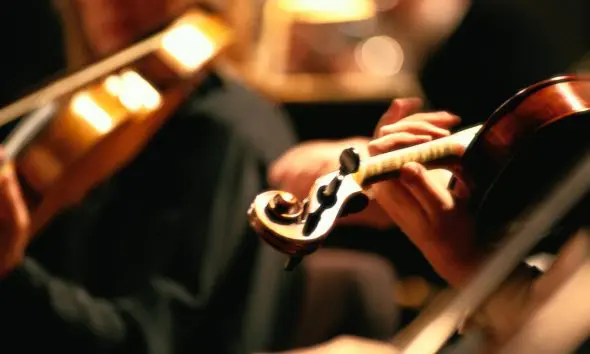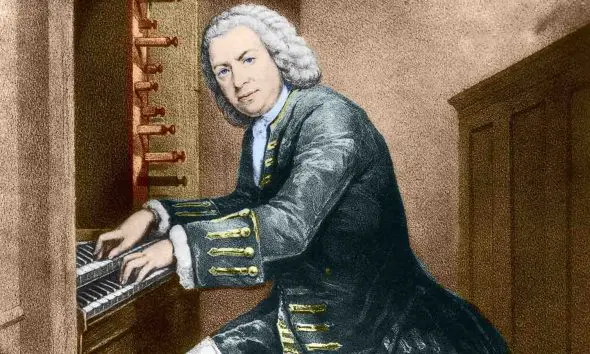Best Ravel Works: 10 Essential Pieces By The Great Composer
Discover our selection of the best Ravel works including ‘Boléro’, ‘Daphnis Et Chloé’ and ‘Pavane Pour Une Infante Défunte’.

Maurice Ravel was one of the leading composers of impressionist music although, like Debussy, he rejected that term. Ravel’s best-known works include Boléro, Daphnis Et Chloé, and Pavane Pour Une Infante Défunte. His compositions are notable for being meticulously and exquisitely crafted and he was a master of orchestration. Ravel’s mother was of Basque heritage, which accounted for his lifelong fascination with Spanish music, and his father was a Swiss inventor and engineer, the likely source of his commitment to precision and craftsmanship. He enrolled at the Paris Conservatoire in 1889, aged 14, as a piano student, and again in 1897 to study composition with Gabriel Fauré.
During this time, he composed some of his best-known works including Pavane Pour Une Infante Défunte, the Sonatine for piano, and the String Quartet. His failure to win the coveted Prix de Rome for composition at the Conservatoire caused a scandal. Between 1909 and 1912 Ravel composed Daphnis Et Chloé for Sergei Diaghilev and Les Ballets Russes which is widely considered his masterpiece. Ravel also made some orchestral arrangements of other composers’ music, of which his 1922 version of Mussorgsky’s Pictures At An Exhibition is the best known. Ravel’s compositions incorporate elements of modernism, baroque, neoclassicism and, in his later works, jazz. He once stated, “The only love affair I have ever had was with music.”
Listen to the best Ravel works on Apple Music and Spotify.
Boléro
Boléro is Ravel’s most famous composition and one of the most frequently performed works of the 20th century. The piece has been featured in many films, including 10 starring Dudley Moore and Bo Derek, and British ice dancers Jayne Torvill and Christopher Dean skated to a specially commissioned version at their gold-medal winning performance at the Sarajevo 1984 Winter Olympics.
Daphnis Et Chloé
Between 1909 and 1912 Ravel composed Daphnis Et Chloé, widely considered his masterpiece, for ballet impresario Serge Diaghilev and Les Ballets Russes. The ballet includes some of the composer’s most passionate music and features extraordinarily lush harmonies typical of the impressionist movement. Stravinsky described Daphnis Et Chloé as, “not only Ravel’s best work, but one of the most beautiful products of all French music.”
Pavane Pour Une Infante Défunte
Ravel composed the original piano version of Pavane Pour Une Infante Défunte, one of his best works, in 1899 while he was studying composition at the Paris Conservatoire with Gabriel Fauré. He also created an orchestral arrangement in 1910. Ravel described the piece as, “an evocation of a pavane that a little princess might, in former times, have danced at the Spanish court.” He dedicated the Pavane to his patron, the Princesse de Polignac.
La Valse
Ravel’s love for the Viennese waltz is evident in La Valse which originated as a tribute to Johann Strauss II. La Valse is both nostalgic and sinister as the initial elegant waltzes distort and reach an explosive conclusion. Ravel described the score as “a choreographic poem …a sort of apotheosis of the Viennese waltz …the mad whirl of some fantastic and fateful carousel.”
Rapsodie Espagnole
Rapsodie Espagnole, an orchestral rhapsody, is the first work Ravel composed specifically for orchestra. The work draws on the composer’s Spanish heritage and is one of several of his works set in or reflecting Spain. Ravel’s extraordinary ability to compose seemingly authentic Spanish music received admiration from Spanish composer Manuel de Falla.
Gaspard De La Nuit
Ravel’s Gaspard De La Nuit is a virtuoso piano work inspired by a similarly titled book of poems by Aloysius Bertrand filled with nightmarish, hallucinatory fantasies. The three movements are mesmerizing realizations of Bertrand’s poetry: cascading water (‘Ondine’), the gentle swaying of a hangman’s noose (‘Le Gibet’), and manic gyrations of a ghostly imp (‘Scarbo’).
Piano Concerto In G Major
The outer movements of Ravel’s Piano Concerto in G Major are heavily influenced by jazz, which Ravel had heard during his North American tour in 1928 where he met George Gershwin. Ravel noted, “The most captivating part of jazz is its rich and diverting rhythm …Jazz is a very rich and vital source of inspiration for modern composers and I am astonished that so few Americans are influenced by it.” The ‘Adagio’ movement was inspired by Mozart. Ravel reflected, “That flowing phrase! How I worked on it bar by bar! It nearly killed me!”
Miroirs
Miroirs is a five-movement suite for solo piano ranging from the sun-drenched virtuosity of ‘Alborada Del Gracioso’ to the intimate evocations of sad birds and tolling bells in ‘Oiseaux Tristes’ and ‘La Vallée Des Cloches’. Each movement was dedicated to a fellow member of the French avant-garde artist group Les Apaches (‘The Hooligans’).
Le Tombeau De Couperin
Ravel’s Le Tombeau De Couperin, composed between 1914 and 1917, pays homage to the French Baroque composer François Couperin and the rich tradition of 18th-century French keyboard suites. Each movement is dedicated to the memory of a friend of the composer who had died fighting in World War 1. The original six-movement suite was written for solo piano and Ravel orchestrated four movements in 1919.
Jeux d’Eau
Jeux d’Eau is a piece for solo piano influenced by the technically brilliant pianistic style of Franz Liszt, one of Ravel’s heroes. The title is often translated as ‘Fountains’, ‘Play of Water’ or literally ‘Water Games’. The sounds made by water – those of fountains, waterfalls, and streams – inspired Ravel and were a popular subject in musical impressionism. Ravel composed Jeux d’Eau while he was studying with Gabriel Fauré and dedicated the piece to him.
Discover more of our articles collecting the best works of composers through the ages.




